Active
The latest Active breaking news, comment, reviews and features from the experts at T3
Explore Active
-

I did a 'resting squat' every day for two minutes – here’s how it improved my mobility, posture and comfort
This underrated move can boost posture, hip mobility, and even digestion
By Lucy Miller Published
-

Smart glasses are getting good fast and 2026 could be their make-or-break year
Smart glasses are sleeker, smarter and far more capable than the Google Glass days
By Matt Kollat Published
-

I test tech for a living and these six gadgets won me over in 2025
From the world’s first 360º drone to smart earrings, 2025 proved innovation in tech is far from slowing down
By Matt Kollat Published
-

New Garmin software update just made battery anxiety measurable on the brand's most underrated smartwatch
Latest beta update finally explains where your battery life is going
By Matt Kollat Published
-

I’ve spent years camping and these 3 are the best camping knives I’ve seen this year
The camping knives that actually earned a place in my pack this year
By Derek Adams Published
-
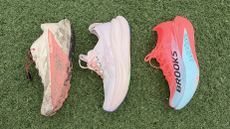
I’ve run over 1,000 miles in 2025 and these are my top three women's running trainers
Winter miles, mixed terrain and a three-shoe rotation that actually works
By Lucy Miller Published
-

We were promised an AI wearable revolution in 2025 – will 2026 finally deliver?
AI wearables two years on
By Matt Kollat Published
-

Best camping mat 2025: inflatable and foam sleeping pads ranked
We select the best camping mats for every occasion, from self-inflating pads to cheap and cheerful roll mats
By Matt Kollat Last updated
-
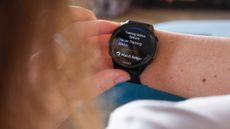
Can you pause Training Status on your Garmin watch? Yes, you can.
Garmin watches have a hidden 'Christmas mode' for your Training Status
By Matt Kollat Published
-

Best rowing machine 2025 for a full-body workout at home
The best rowing machines to buy today, from top brands including NordicTrack, WaterRower, Hydrow and more
By Bryony Firth-Bernard Last updated
-

Best under-desk treadmills 2025: work yourself fit
Buying Guide The best under-desk treadmills to keep you fit when you’re at your desk
By Bryony Firth-Bernard Last updated
Buying Guide -
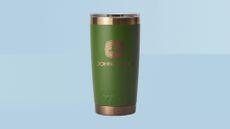
YETI’s John Deere tumbler makes a lot of sense, actually
The collab feels oddly inevitable and 100% on point
By Matt Kollat Published
-

Strava isn’t just a fitness app anymore, and 2026 will prove it
After lawsuits, acquisitions and AI, Strava enters 2026 at a crossroads
By Matt Kollat Published
-
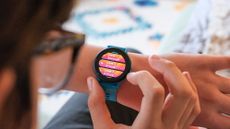
Garmin’s rotating crown plans sound more rugged than expected
A dual-function crown seems likely on upcoming Garmins – but which one?
By Matt Kollat Published
-
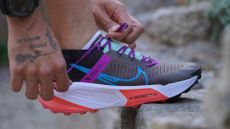
Nike is betting its future on shoes you can actually run in
Running has quietly become Nike’s strongest growth engine as lifestyle staples fade
By Matt Kollat Published
-

Saucony’s 'fastest feeling' Endorphin running shoe isn’t a racer
The Endorphin line just got bigger
By Matt Kollat Published
-

Your smart ring wants you to stop laughing about snoring and start measuring it
Ultrahuman’s Ring AIR can now tell how snoring is hurting your sleep
By Matt Kollat Published
-

This four-move dumbbell workout boosts full-body strength and fitness in 30 minutes
Strengthen your entire body, build muscle endurance and improve your aerobic capacity
By Bryony Firth-Bernard Published
-

This cute little Jackery power station solves a problem no one talks about
The Explorer 300D rethinks portable power for everyday tech and travel
By Matt Kollat Published
-

I'm a camping expert and these are the 3 best sleeping bags I’ve seen in 2025
Whether it’s trekking across the fells or engaging in a languorous car-camping stint, these are the best sleeping bags to pack
By Derek Adams Published
-

Meta’s AI glasses just got smarter – and Europe’s getting some of the best upgrades
A software update that makes Meta’s AI glasses feel more natural, more personal and far more useful
By Matt Kollat Published
-

I’ve tested dozens of trail running shoes this year – these are the three I still use
Three very different trails, three shoes that earned a permanent spot in my rotation
By Pat Kinsella Published
-

This British experimental brand turned one of Earth’s strangest metals into a serious winter jacket
Vollebak’s new Full Metal Puffer looks like sci-fi nonsense, until you realise it’s built for sub-zero winters
By Matt Kollat Published
-

A top fitness coach shares his 30 minute chest and back workout for building muscle
No need to spend hours in the gym, as Jeff Cavaliere explains with his latest ‘X-press’ workout
By Bryony Firth-Bernard Published
-

A fitness expert shares three bodyweight exercises to ‘life-proof’ your knees
Stronger knees equals better movement and less pain, what’s not to love?
By Bryony Firth-Bernard Published
-

Garmin could be about to revive a forgotten wearable category – and it makes perfect sense
A new Vivosmart could signal Garmin’s quiet return to a category most brands walked away from
By Matt Kollat Published
-

MSR Hubba Hubba LT2 review: a classic backpacking tent, reinvented
After 21 years, the iconic Hubba Hubba has had a major update
By Pat Kinsella Published
-

Skip the gym – a Pilates instructor shares a six-move full-body workout to build strength all over
You just need a light pair of dumbbells, or water bottles
By Bryony Firth-Bernard Published
-

Smart rings promised a wearable revolution – now they’re fighting to stay relevant
The smart ring market has cooled, but the next phase could decide its long-term future
By Matt Kollat Published
